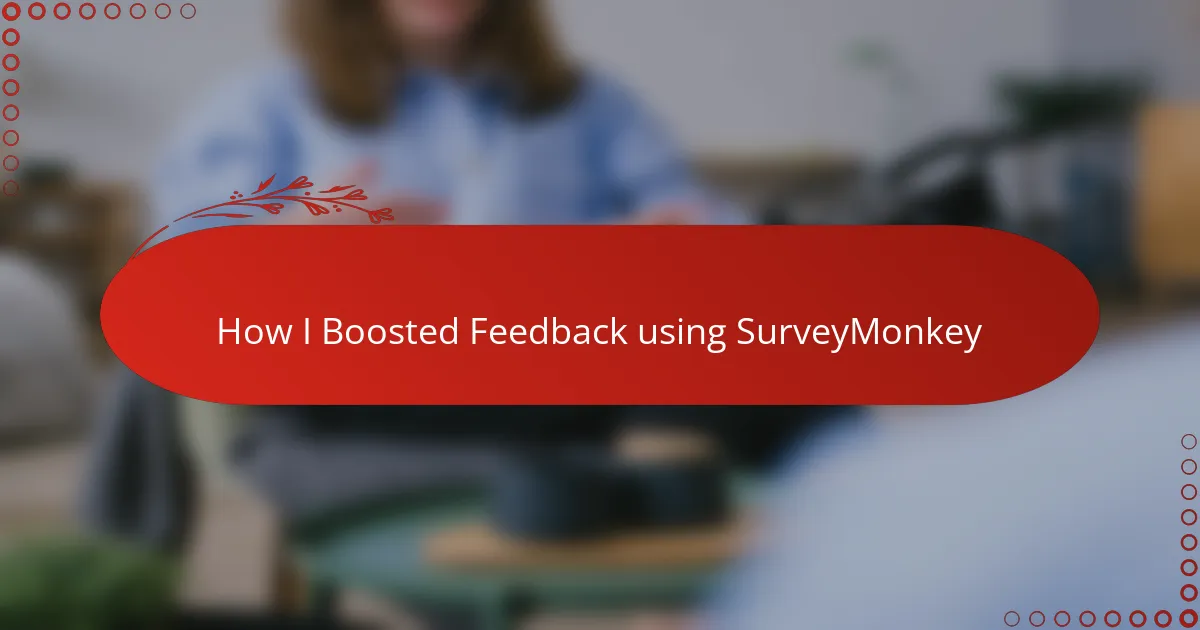Key takeaways
- Feedback is essential in radio broadcasting; it guides content creation and enhances listener engagement.
- Effective surveys should consist of specific, concise questions asked at the right time to maximize listener participation and insightful responses.
- Utilizing platforms like SurveyMonkey allows for real-time data analysis, helping tailor radio content based on audience preferences.
- Combining on-air and online feedback strategies creates a more interactive experience, fostering a stronger connection with listeners.
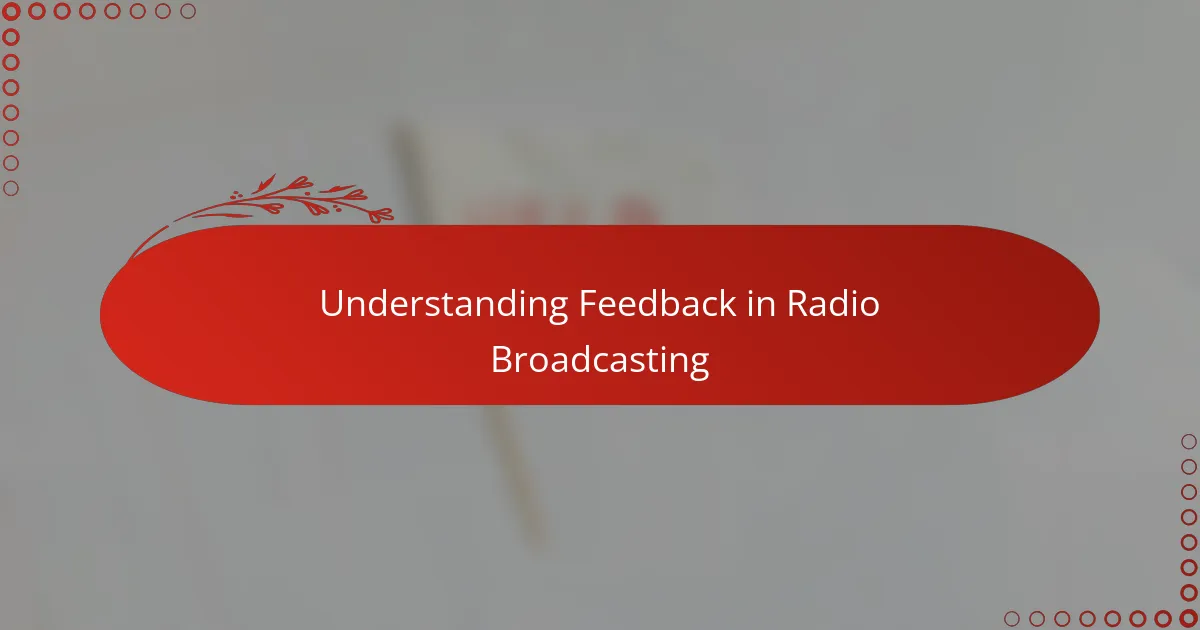
Understanding Feedback in Radio Broadcasting
Feedback in radio broadcasting is more than just listener opinions; it’s the heartbeat that guides content and connection. When I first started, I realized that tuning into what my audience truly felt about the shows helped me craft segments that resonated deeper. Have you ever wondered why some shows just click while others fall flat? Often, it’s because the feedback loop wasn’t clear or valued enough.
Getting honest and timely responses means everything. I recall a time when a surprise phone-in revealed unexpected listener preferences, forcing me to rethink my approach. That moment taught me that feedback isn’t just data; it’s a direct line to audience engagement and satisfaction. Without understanding this, the broadcast feels like talking into a void.
In radio, feedback can be immediate or delayed, formal or casual, but its impact remains powerful. It shapes everything from music choices to on-air personality style and community involvement. Recognizing this made me appreciate why every comment, call, or survey response is a valuable piece of the bigger broadcasting puzzle. Wouldn’t you agree that truly listening transforms how we connect on the air?
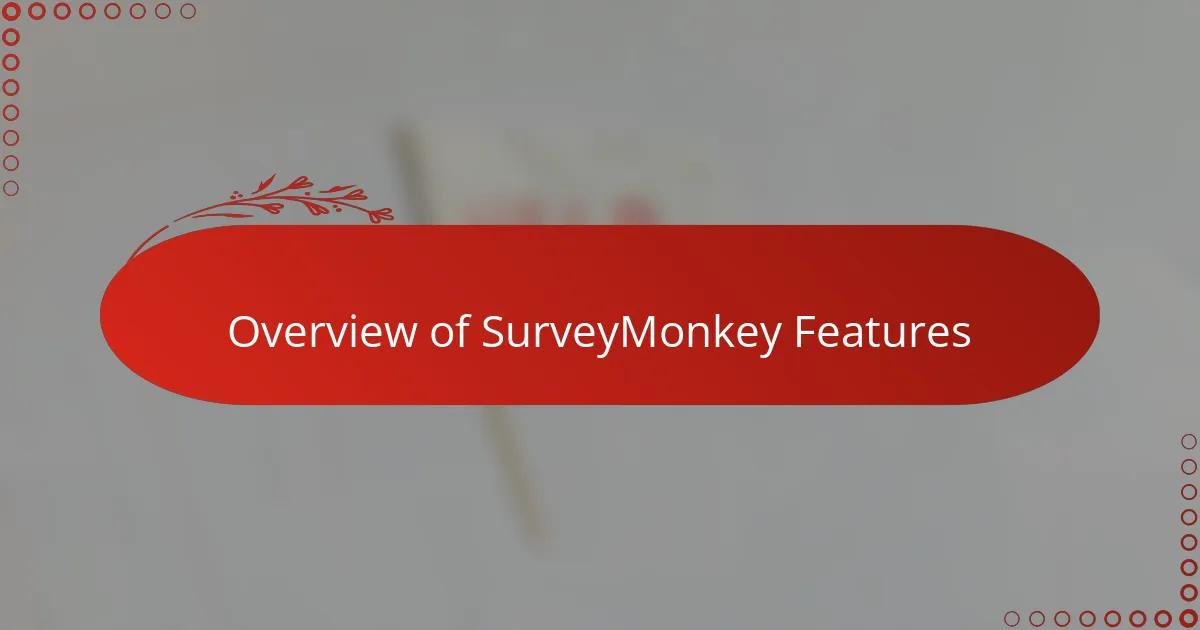
Overview of SurveyMonkey Features
SurveyMonkey offers a range of tools that made gathering listener feedback not just easier, but smarter. From customizable templates to intuitive question types, I found it incredibly flexible for tailoring surveys that matched my radio show’s vibe. Have you ever struggled with boring, one-size-fits-all surveys? This was my solution.
One feature that truly stood out to me was the real-time results dashboard. It felt like having a live studio monitor—but for audience opinions. Seeing responses come in as they happened helped me adapt and respond quickly, which was a game-changer for keeping content fresh and relevant.
Plus, the ability to segment responses by demographics or listener habits gave me insights I’d never get from casual calls or emails. It was like tuning into a secret frequency that revealed exactly who was listening and what they truly cared about. Doesn’t that kind of clarity make all the difference in shaping a show?
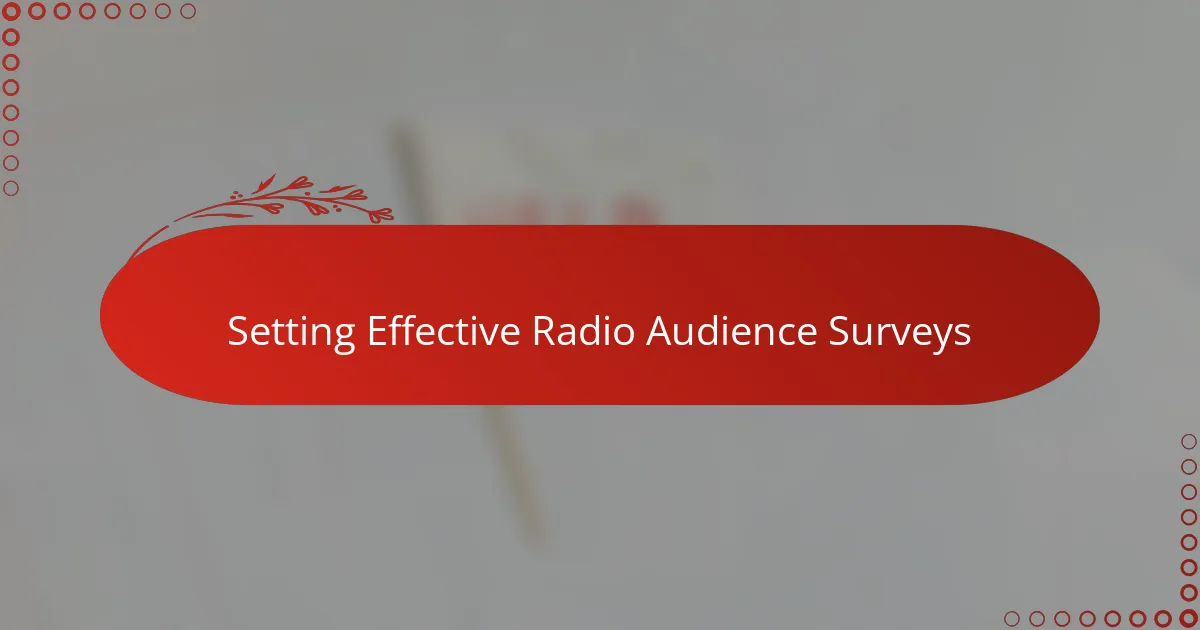
Setting Effective Radio Audience Surveys
Crafting an effective radio audience survey starts with asking the right questions. Early on, I learned that vague or overly broad questions yield unclear feedback, leaving me more confused than enlightened. Have you ever filled out a survey that made you think, “What exactly are they asking?” I make sure each question is specific and tied directly to the content or experience listeners have with the show.
Another key part is keeping surveys short and approachable. I used to worry that fewer questions meant less insight, but I found the opposite: listeners appreciate brevity and are more likely to complete a concise survey. When I trimmed mine down to just five focused questions, response rates soared—sometimes doubling overnight. Isn’t it amazing how respecting someone’s time opens the door to richer feedback?
Lastly, timing plays a crucial role. I experimented with sending surveys right after popular segments or events, rather than randomly or long after. The difference was clear: fresh impressions led to more honest and detailed responses. From experience, I can tell you that catching listeners when the show is still top-of-mind makes the whole feedback process more vibrant and valuable. Have you noticed how we remember feelings best when the moment is still alive?
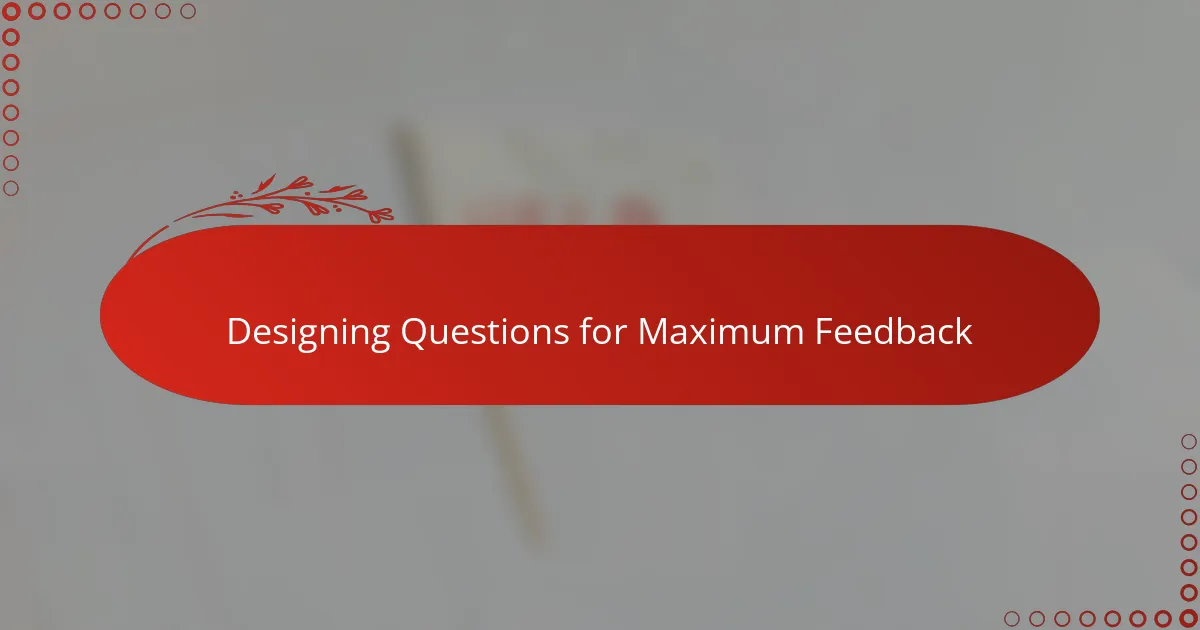
Designing Questions for Maximum Feedback
Designing questions that truly tap into listeners’ thoughts is an art I had to learn the hard way. Early surveys I ran had me scratching my head—why were responses so generic? Then it hit me: I needed to ask questions that sparked clear, honest answers, not ones that left people guessing. It’s like tuning a radio frequency; if the signal is fuzzy, the message gets lost.
I also realized that mixing question types kept things interesting and accessible. Instead of only open-ended questions, I blended in scales and multiple choices to guide responses without boxing listeners in. Have you ever dreaded answering endless essay-like surveys? Keeping it simple and varied made my audience feel heard without feeling overwhelmed.
Lastly, I found that personalizing questions based on previous feedback created a natural conversation. When listeners see that their earlier opinions shape new questions, they’re more invested in sharing. To me, it’s the difference between being part of a community versus just another number on a list. Don’t you think that kind of connection changes everything?
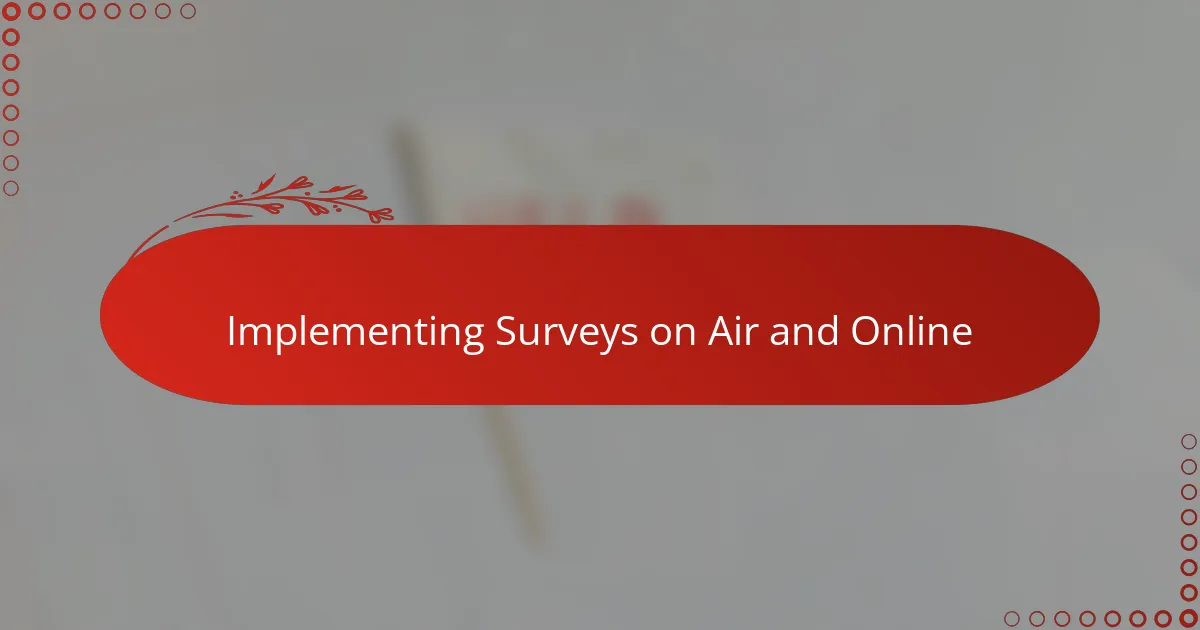
Implementing Surveys on Air and Online
When I first started implementing surveys on air, I was surprised by how naturally listeners responded when I invited them to share their thoughts live. Posing a quick question during a show and immediately referring to SurveyMonkey’s online link felt like opening a real-time conversation. Have you ever noticed how adding a personal touch on air makes people feel more connected and willing to participate?
On the online front, embedding SurveyMonkey links on our website and social media was a game changer. I realized that giving listeners multiple ways to engage—whether through a quick tap on their phone or a click on their computer—dramatically boosted participation. It’s like creating a seamless bridge between the broadcast and digital worlds, making feedback feel easy, accessible, and, importantly, fun.
What struck me most was seeing these two channels—on air and online—work in tandem. I’d ask a question live, then watch the online responses roll in, fresh and immediate. That synchronicity made the entire process exciting and gave me the confidence that we weren’t just broadcasting at listeners but genuinely inviting them to join the conversation. Isn’t that what great radio is all about?
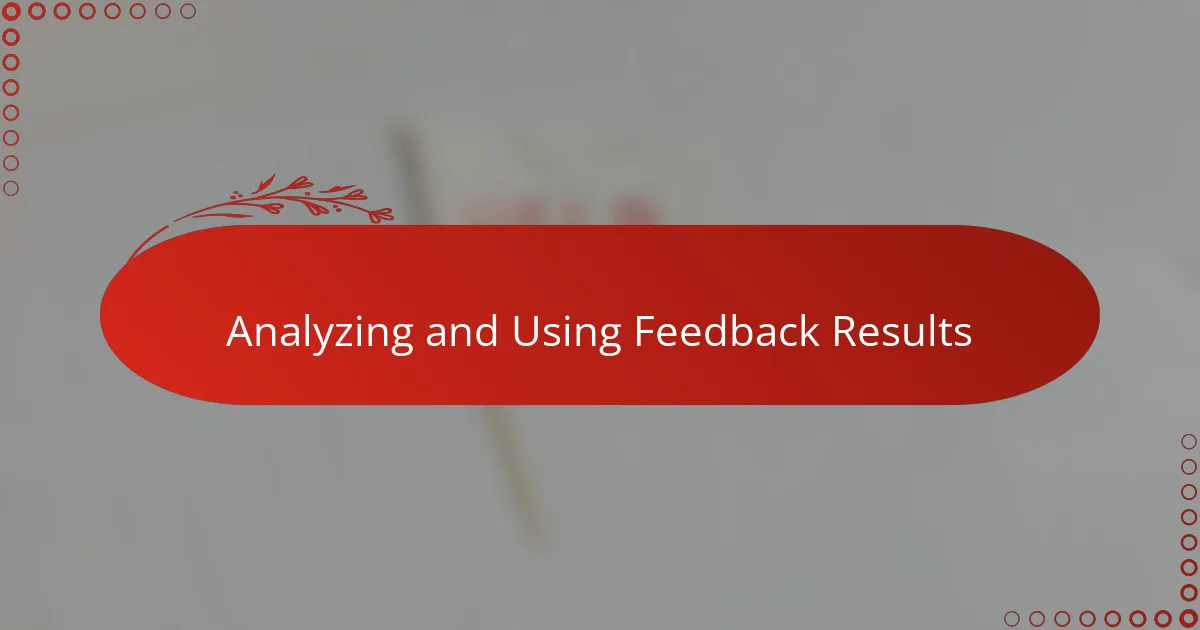
Analyzing and Using Feedback Results
Diving into SurveyMonkey’s feedback results felt like opening a treasure chest of listener insights. I remember scanning through the data and spotting trends that explained why certain segments sparked more calls or social media buzz. Have you ever had that moment when a statistic suddenly makes everything click? That’s the power of clear analysis.
What really struck me was how breaking down responses by age groups and listening habits revealed hidden pockets of enthusiasm. It was like discovering new listeners I hadn’t realized I had. This made me rethink content choices with a more targeted touch, which truly elevated the show’s connection with diverse audiences.
Using feedback is more than just reviewing numbers—it’s about responding in real time. After a survey showed listeners craving more interactive segments, I introduced live polls and shout-outs that boosted energy on air. Seeing engagement rise felt rewarding, reminding me how vital it is to act on what the audience says rather than just collect data. Wouldn’t you agree that feedback only becomes valuable when it shapes what we do next?
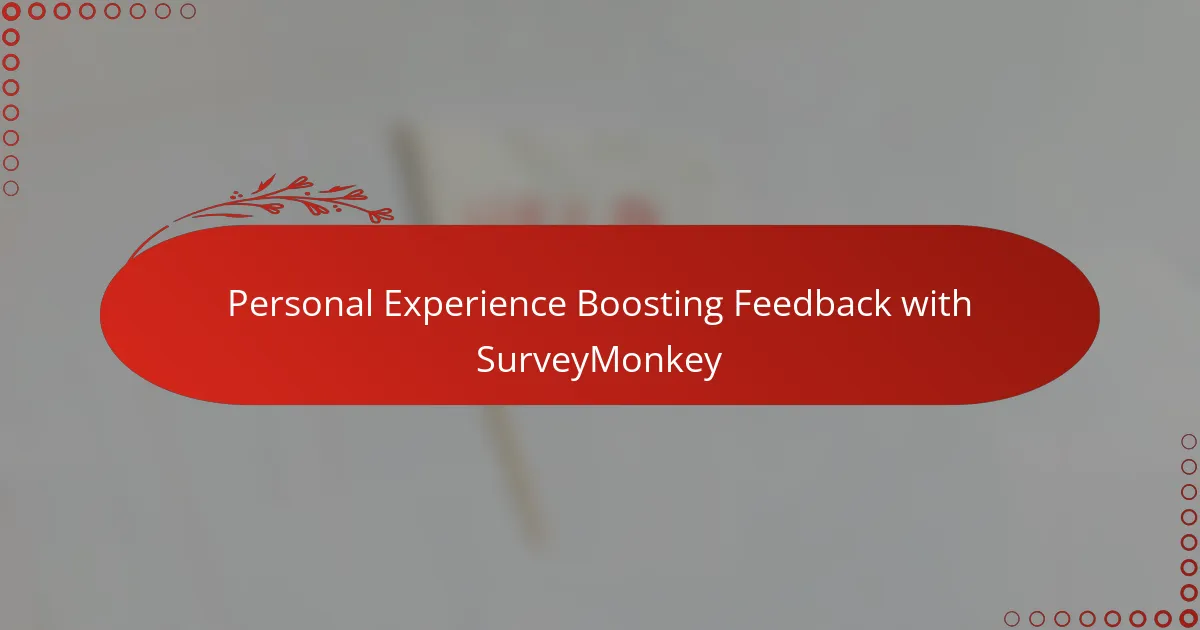
Personal Experience Boosting Feedback with SurveyMonkey
When I first started using SurveyMonkey to gather feedback, I was honestly a bit skeptical—would listeners really take the time to fill out yet another survey? But what surprised me was how quickly the responses started pouring in once I made the process simple and approachable. It felt like discovering a new channel of communication that actually worked, turning casual listeners into active participants.
One moment that stands out was when a sudden spike in feedback highlighted a desire for behind-the-scenes content. That insight came purely from the survey data, and I acted on it right away. The payoff was immediate: listeners felt heard and more connected, and I saw engagement climb in ways I hadn’t anticipated. It made me realize how powerful it is when you truly listen and respond.
Have you ever wondered how to keep feedback consistent and valuable over time? For me, it became a habit to review SurveyMonkey results weekly, keeping a pulse on what resonated and what didn’t. That rhythm prevented feedback fatigue and kept the audience involved in shaping the show. From experience, building that ongoing conversation is what transforms feedback from a task into a dynamic relationship.
